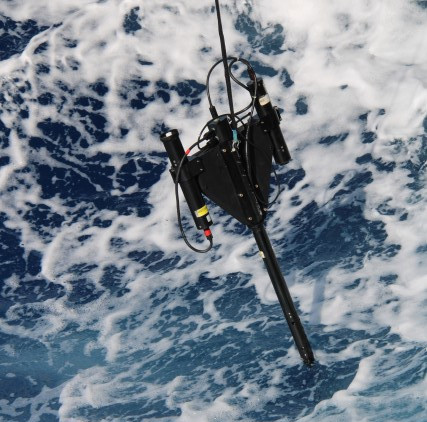|
Hawaii Ocean Time-series (HOT)
in the School of Ocean and Earth Science and Technology at the University of Hawai'i at Manoa |
|
| » Home » Analytical Results » HyperPro | ||||||||
Sampling ProcedureThe Satlantic HyperPro is an in-situ free-fall profiling unit designed to measure the apparent optical properties of the ocean with concurrent measurements of temperature, salinity, chlorophyll and dissolved matter fluorescence, and optical backscattering (a proxy for total particle load). The unit is equipped with one up-looking and one down-looking hyperspectral (350-800nm) radiometer with 10 ± 0.3 nm resolution, a WET Labs ECO-Puck Triplet, and temperature, pressure, and conductivity sensors. It also incorporates a ship-mounted surface (air) hyperspectral radiometer. The applications for this sensor include bio-optical algorithm development, satellite calibration and validation, and environmental monitoring. The data products include water leaving radiance, remote sensing reflectance, energy fluxes, and PAR. ResultsProfiles of photosynthetically available radiation (PAR) and PAR attenuation coefficient (KPAR) measured using the HyperPro are shown in the bottom panels of the figures below. Due to the tendency for the instrument to tilt back-and-forth when brought up through the water column, only the downcast profiles are included.
Figure 58 shows a time-series of the 1% light level and KPAR during the 24 years we've been collecting in-situ PAR data. Both vary seasonally. Data for HOT cruises 90-214 were collected using a Biospherical PRR-600, while cruises 215 (Sep 09) onward used a Satlantic HyperPro. The average 1% light-level at Station ALOHA is 105.5 m while the average KPAR between 100 & 150m is 0.0439 m-1. | ||||||||


